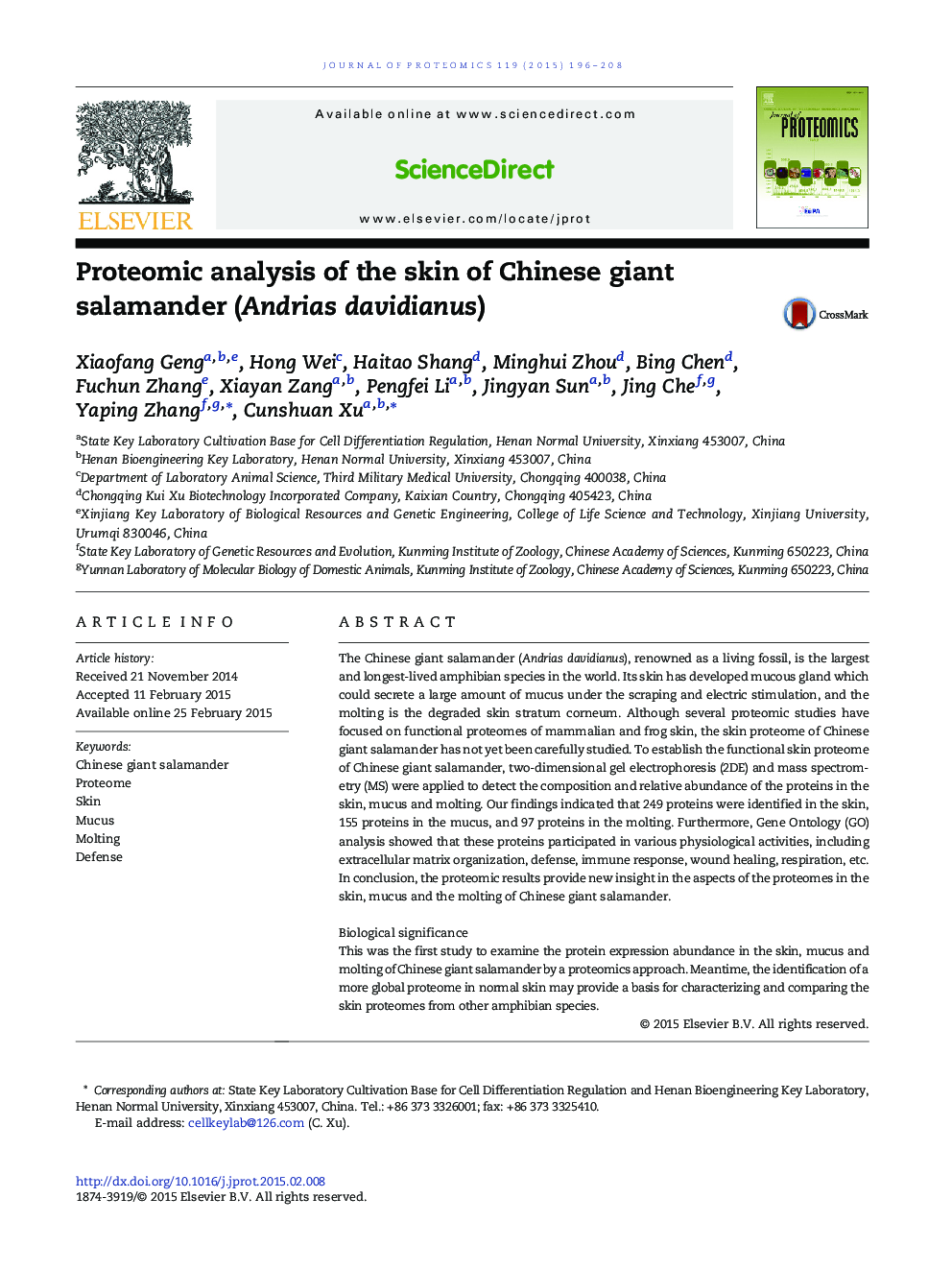| کد مقاله | کد نشریه | سال انتشار | مقاله انگلیسی | نسخه تمام متن |
|---|---|---|---|---|
| 1225377 | 1494761 | 2015 | 13 صفحه PDF | دانلود رایگان |

• We firstly reported the proteomes from skin, mucus and molting of Chinese giant salamander.
• 249 proteins were identified in the skin, 155 in the mucus and 97 in the molting.
• We found that many kinds of proteins were associated with immunity defense and wound healing.
• Several proteins identified in the skin were related to respiration.
• This study provided valuable information for the field of herpetology.
The Chinese giant salamander (Andrias davidianus), renowned as a living fossil, is the largest and longest-lived amphibian species in the world. Its skin has developed mucous gland which could secrete a large amount of mucus under the scraping and electric stimulation, and the molting is the degraded skin stratum corneum. Although several proteomic studies have focused on functional proteomes of mammalian and frog skin, the skin proteome of Chinese giant salamander has not yet been carefully studied. To establish the functional skin proteome of Chinese giant salamander, two-dimensional gel electrophoresis (2DE) and mass spectrometry (MS) were applied to detect the composition and relative abundance of the proteins in the skin, mucus and molting. Our findings indicated that 249 proteins were identified in the skin, 155 proteins in the mucus, and 97 proteins in the molting. Furthermore, Gene Ontology (GO) analysis showed that these proteins participated in various physiological activities, including extracellular matrix organization, defense, immune response, wound healing, respiration, etc. In conclusion, the proteomic results provide new insight in the aspects of the proteomes in the skin, mucus and the molting of Chinese giant salamander.Biological significanceThis was the first study to examine the protein expression abundance in the skin, mucus and molting of Chinese giant salamander by a proteomics approach. Meantime, the identification of a more global proteome in normal skin may provide a basis for characterizing and comparing the skin proteomes from other amphibian species.
Figure optionsDownload high-quality image (396 K)Download as PowerPoint slide
Journal: Journal of Proteomics - Volume 119, 24 April 2015, Pages 196–208